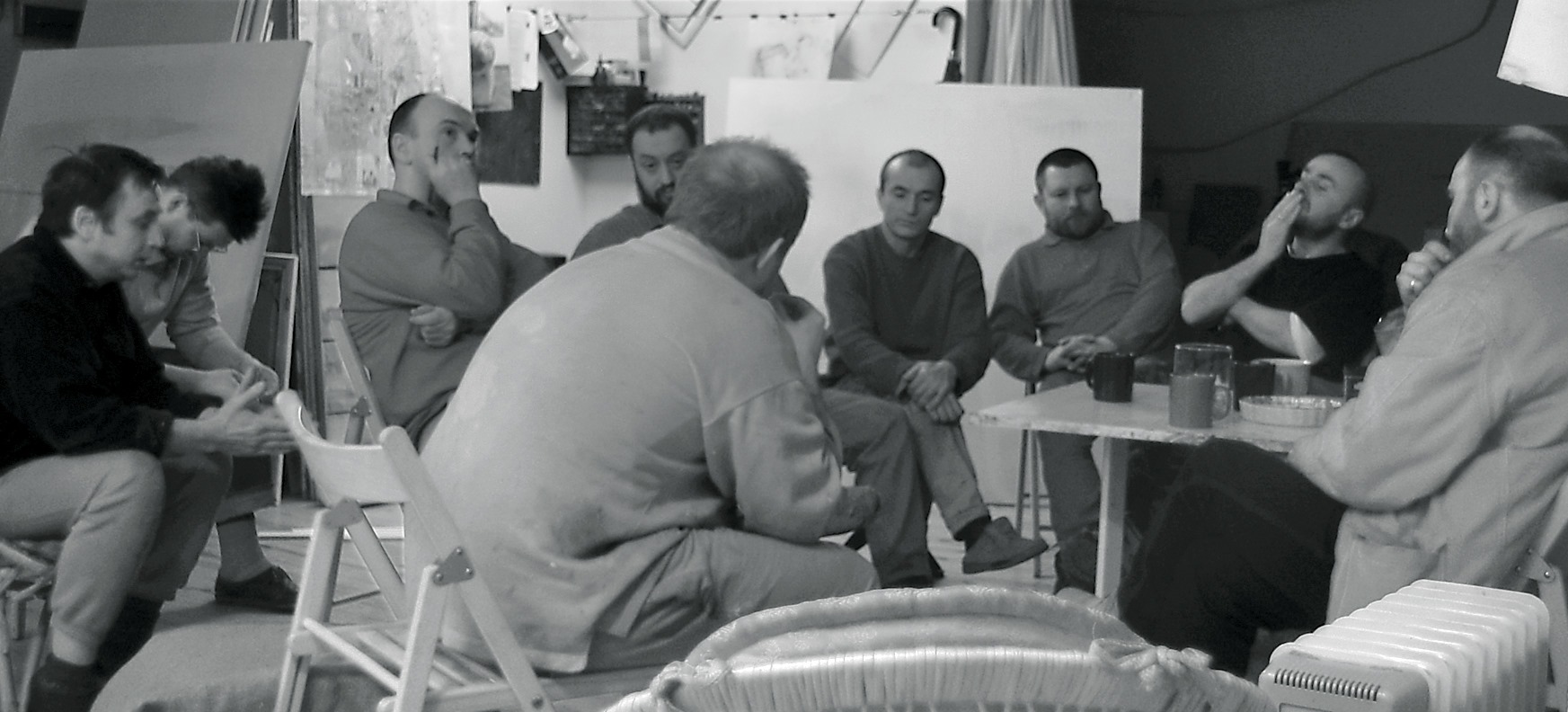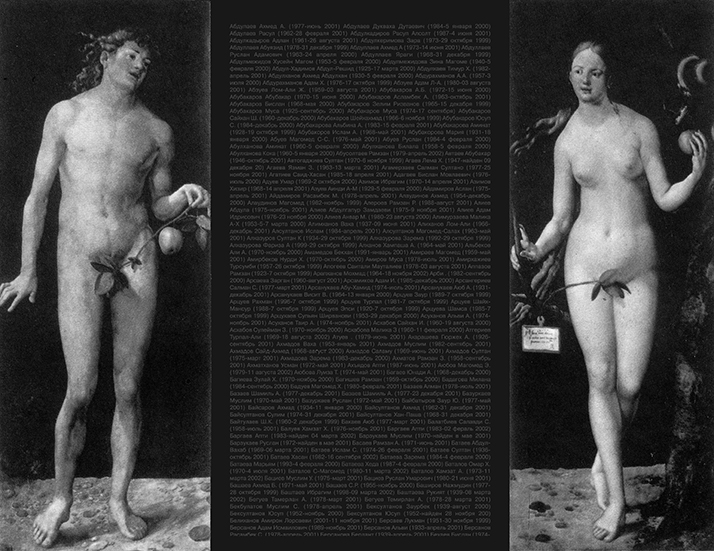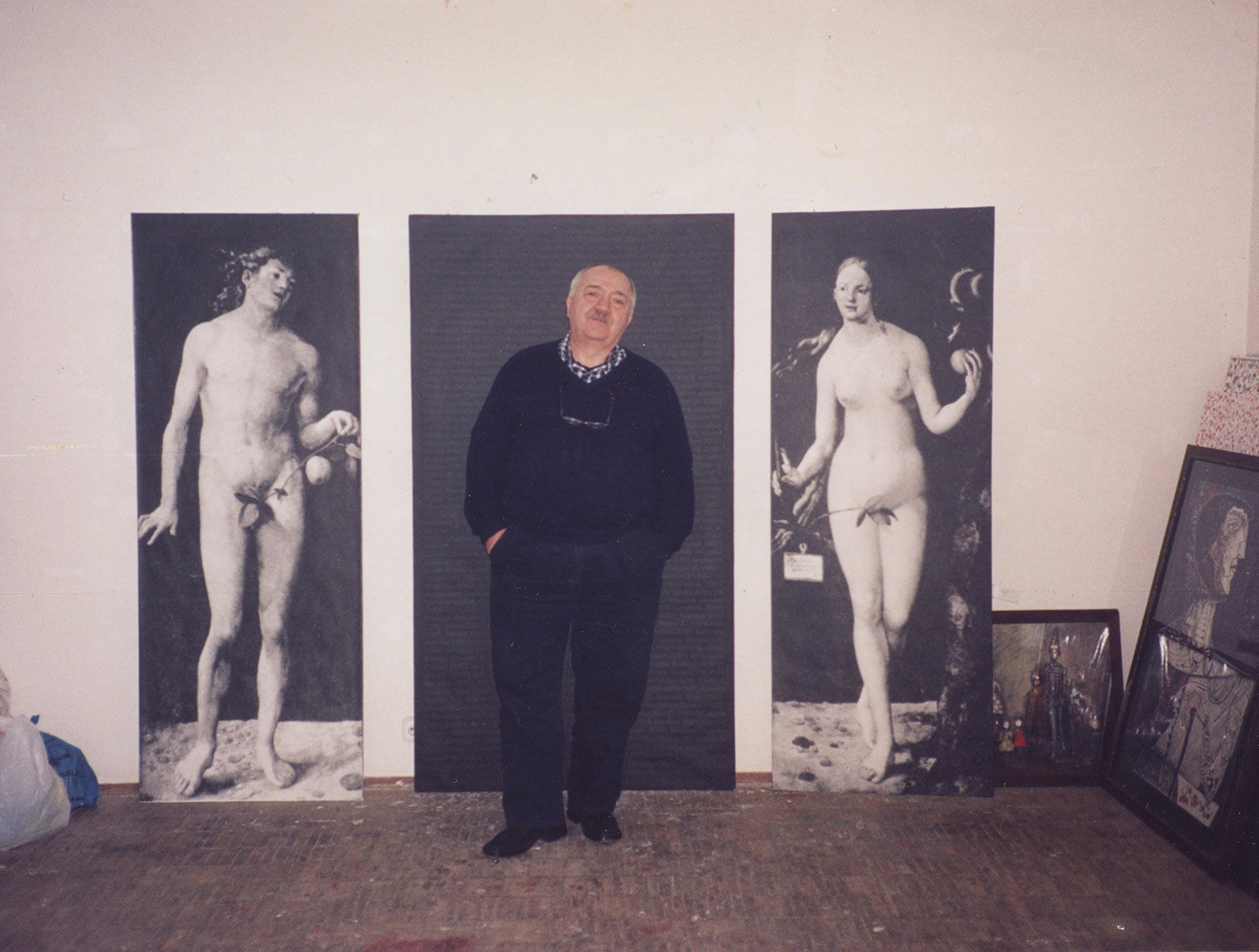
The “Invasion” project took place from March 21 to March 30, 2003, at the Great Exhibition Hall of the National Union of Artists of Ukraine (House of Artists) in Kyiv. It was the first solidarity action by Ukrainian artists when they openly opposed the war in Chechnya, conducted by Russian forces.
The project involved 22 contemporary Ukrainian artists who sought to draw society’s attention to the Chechen tragedy. These artists, with diverse artistic ideas, aesthetic preferences, and cultural backgrounds, came together with a common purpose – to express their protest against the incredibly brutal actions carried out by Russia in the Caucasus (1999-2000).

Photo by Andriy Nakorchyevsky
Manifesto, discussed and supported by all project participants:
“This exhibition is an attempt to turn away from illusion, from mass consciousness to personal perception, to reality, by rejecting intermediaries – the media. It’s a touch to the heart, an attempt to break the illusion of silent consent to the trends gaining strength in the world, and through the language of artistic works, define one’s position.
Mass media technologies have made the world very dense. Private life is constantly under the pressure of filtered information. It presents ready-made conclusions to consciousness and imposes a certain position on individuals. The coverage of events related to aggression and war vividly demonstrates this desire to shape a person’s consciousness from the outside.
The division of wars into good and bad, liberating and expansionist, terrorist and for democracy, necessary and so on, avoids the main question of the unacceptability of war itself. The need to define any war as a crime is silenced. Thus, conditions are created for further aggression in all its manifestations. The system of collective decisions allows conscience to be pacified, as if removing the problem of individual responsibility. The devaluation of words and concepts, manipulation of them, footage of ruins and military operations, photos and lists of the number of casualties have become so commonplace that they have turned into information noise. Horror, blood, and death have become virtual amusements and are not perceived as real. We consider it impossible and unacceptable to mask geopolitical, resource, and power interests of states under the slogans of fighting for democracy or territorial integrity. It is impossible to kill people supposedly for the protection of their rights and freedoms.
We only wanted, through the means of art, to draw attention to the tragedy of a small nation. What is happening in the Caucasus is happening right before our eyes, and we can, and therefore must, witness this terrible manifestation of brutal violence.
Understanding the true impact of art on life, we do not hope for immediate changes, but we cannot remain undecided. This is demanded by human conscience, the life-affirming foundation of culture, and the personal position of artists. We want it to be clear to everyone that today no one can feel safe, for our world is too small and fragile.”
The very attempt to express themselves on a topical issue compelled many artists, most of whom were primarily engaged in studio painting, to venture into contemporary forms such as photography, photo installation, and performance.
Subsequently, these artists joined forces in projects dedicated to the independence of Ukraine (the “350 Years Later” project) and the independence of Georgia (the “Reflections on the Path” project). They also gathered together in acts of civil disobedience during the Orange Revolution (2004) and the Revolution of Dignity (2013-2014).
Temo Svirely, in creating the triptych “Adamiani” for the Invasio project, turned to photo installation. “Adamiani,” ადამიანი translated from Georgian, means “human.”
The famous diptych by Dürer was “translated” into a black and white palette of photography, where Adam and Eve found themselves divided by a black “square” of nothingness.

Temo Svirely. “Adamiani,” photo installation, 200 x 300 cm (triptych), 2003
On the anxious black background of the central part of the triptych, if one were to approach closely, a list of killed civilians, residents of Chechnya, became visible, and these were only surnames that all started with the letter “A”:

Fragment from the central part of the triptych “Adamiani.”
The innocent lives lost create a gap between Adam and Eve, the forebears of humanity, preventing them from uniting. Every human life is priceless. Each of us is a human, an adamiani.

Press Review:
Newspaper “Day”, June 25, 2003


